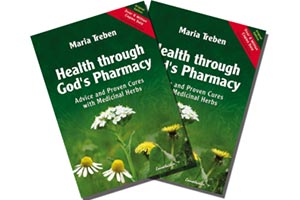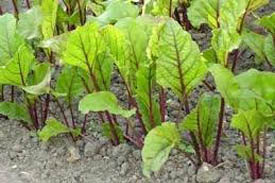Gardening: Herbal Trees
Not all herbal medications come from plants. Trees are a many and varied pharmaceutical recourse. Perhaps that flowering Dogwood, or Mimosa, so common in this area might be seriously considered?
A recent Public Radio-Science Friday show had interviews a researcher using Satellite mapping sources and actually counted how many trees there are currently on this planet. To make the number understandable he posed that –X- trees existed for the 6 BILLION people. The answer is below. In the mean time ask your spouse or children “ how many trees exist for each of us?”
I had said earlier that this was my tree year-among building a mini solar greenhouse as a model for those interested, plus a new giant garden makeover. My neighbor was busy with his backhoe and front-end loader two days ago when it was 63F outside. Now at this time of writing it is snowing nicely.
I have a ½ acre lower field across the creek that is a cold spot for winter receiving no sun and at the bottom of the small valley. But it does have water and the speedy Black Walnut trees therein testify that that is a good place to plant new Black Walnuts. Needless to say the wild Black Walnuts that grow here are of less value for timber-furniture and veneer, as magazine and books would suggest. The best Black Walnut for this purpose comes from Okalahoma where it is tree farmed.
So you say, “well I can always harvest the nuts.” True, but they are usually small, wormy and painstakingly hard to shell out.
For years I have wanted to plant THOMAS Black Walnut Trees but they were not in my budget, often a twig going for fifty dollars. Lucky me! I spotted them in www.millernurseries.com catalog that sold my favored oversize nut trees. If you want big healthy Black Walnut trees these are one of the top developed ones. I ordered 10 trees and will line my creek sides 40’ apart.
While these trees are growing I will have the worlds best recipe for Black Walnut Pound Cake for you this fall.
From an herbal medical view, Black Walnut has long been used as an astringent, alterative, anti-fungal, antiseptic and vermifuge.
Also on my list was Witch Hazel. This has been used for centuries as an astringent and anti-inflammatory. Look to a later article on making alcohols and we will distill it. The small shrub has the unique ability to propel seeds up to twenty feet and legate itself. I like the bright yellow flowers for my beloved bees, as this is a very early producer of pollen. Witch Hazel grows best with good drainage and moderate social in full and partial sunshine.
Also from Miller Nurseries I ordered two sweet cherries for planting in front of the house. The flowering of course is wonderful, but the sweet cherries, if the birds do not strike too fast, will fill my cupboards. A semi-dwarf tree reaching about 10-15’ high planted in a deep hole filled with composts and watered thoroughly at 15 gallons a week will produce about 60 lbs, or more. Recall on the earlier gout articles that Sour-pie cherries were recommended for gout. Sweet cherries are recommended for health in general. You will need cherry pitter from Farmers Supply in Floyd.
Since I do not hand dig big planting holes anymore to provide healthy composts, and such manure amendments to the deep root system for the beginning plants I have purchased some time back a motorized 3HP post hole digger from www.HarborFreight.com. With this tool I can punch in six-inch wide, two-foot deep holes. I try and punch 4 holes. One is for fill up for the tree. One adjacent to the tree planted hole filled with more composts. The last of the holes is a water hole and by the 2 year end, this is just filled with composts too as the root system is taking hold. Cherry trees are very sturdy once you get them going.
Of course lacking all this strength and labor you can simply purchase some Tree Pep pills, or a number of tree fruit spikes at the garden center, following directions, just dig a tiny bit and plant. You do have to water though.
Also at www.kellynurseries.com I found the White Fringetree or Old Man’s Beard. This is a specific for liver disease, gallstones, kidney stones and pelvic congestion. This is a beautiful bee tree-shrub perhaps reaching as much as 20’. It requires a pH soil slightly acid so you might adjust with sulphur dust- just a tad now. A little compost goes a long way.
Probably the most beneficial tree on this list is the Ginkgo. Famed for thousands of years to reduce dementia and other old age mental “I forgot” symptoms. This tree grows high, perhaps a 100 feet in a 300-year period. This is a must tree for the landscaper, and for the home herbalist. Neutral soil, dry feet and a little compost.
Sarvis trees are food trees and good for urinary protection like cranberry. These trees make beautiful spring flowering and are thick with honeybees. When they were plentiful, they made fine wood for fine furniture and musical instrumemnts. Personally I cannot imagine cutting down a tree.
Kelly’s was out of Shagbark Hickory, a most wonderful food tree and most unusual with its bark hanging in leaves. This tree is also a native bat haven in many cases and we need bats. See my next Halloween article on blessed bats.
A recent review of www.horizonherbs.com was a book that may interest you. “Medicinal Plants of the Southern Appalachians” by Patricia K. Howell. The only criticism I have is there are no pictures, but one can always slip over to the Audubon series for that. Good references and suggestions with recipes.
My next order from horizon herbs will be some tree seed: Slippery elm, a food and medicinal tree. I am sure Diane will find some thoughts for me to ponder too on where I can place all these trees.
There are 64 trees per person on this planet, less what my neighbors just cut down. It takes 7 acres of trees to clean the air and provide oxygen for a family of four people. Remember when you stop the car and breath in the pine forest on a wet day…ahhh! That’s life.
Copyright: Back2theLand, Mark Steel.



